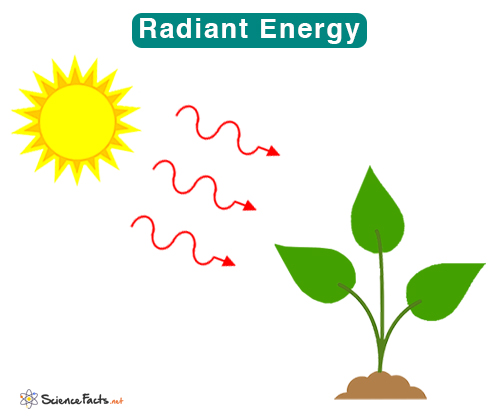Radiant Energy
Radiant energy, also called electromagnetic radiation, is the energy emitted by electromagnetic waves that travel through space without any medium. It is the energy that can be seen or felt by every living being, meaning it can be both visible and invisible. The light we see all around us and the warmth we feel when we are out in the sun are radiant energy. When a doctor takes our X-ray, radiant energy passes through our skin and reaches the bones. Radiant energy is vital as it supports life.
What Causes Radiant Energy
Electromagnetic waves are made of oscillating electric and magnetic fields. The two fields oscillated in planes perpendicular to each other. The energy and the wave propagate in a direction perpendicular to the two planes. Since space is devoid of matter, electromagnetic waves do not require any medium to propagate. Oscillating fields involve the movement of charged particles; hence, radiant energy is considered kinetic energy.
The frequency of oscillations gives the magnitude of radiant energy. The higher the frequency, the higher the energy. For example, ultraviolet radiation has higher energy in the electromagnetic spectrum than infrared. According to wave-particle duality, electromagnetic radiation can also be considered particles. These particles are called photons and transmit energy in packets or quanta.
How Does Radiant Energy Work
Let us take the example of sunlight to understand how radiant energy works. Sun emits radiant energy in the form of light, traveling at a speed of 3 x 108 m/s. This energy travels through space and reaches Earth. The light radiation strikes our skin and excites the skin molecules. The molecules then start to vibrate rapidly, and we perceive the vibrations as heat.
Properties and Characteristics
- Caused by the motion of charged particles
- Transmitted by electromagnetic waves or particles knowns as photons
- Travels in a straight at the speed of light, which is 3 x 108m/s
- Travels in solid, liquid, gas, and even in a vacuum
- Can be transmitted, absorbed, and reflected
- High-frequency electromagnetic waves have higher radiant energy than low-frequency ones
Radiant Energy Source
Here are some examples of objects emitting radiant energy.
- Sun
- Stars
- Bulb
- Laser
- Space heater
- Hot stove
- Microwave oven
- X-ray machine
- Campfire
Uses and Applications
- Plants convert radiant energy from the sun into chemical energy, producing food through photosynthesis
- An induction stove converts electrical energy to radiant energy, which is used for cooking
- Solar cells harvest sunlight by converting it into electricity
- A campfire emits heat and keeps us warm at night
- Cell phones utilize radiant energy to function
- An X-ray machine generates X-rays that are used to detect fractures in our bones
-
References
Article was last reviewed on Tuesday, May 9, 2023









This article is very helpful but there is a little mistake. Ultraviolet radiation carries more energy than infrared.
: )
Thank you for the comment. We have corrected it.
I would love it if you made a chart on electromagnetic energy examples.
Love the charts, thankyou
i need examples of this type of energy
The section on Radiant Energy Source has the examples